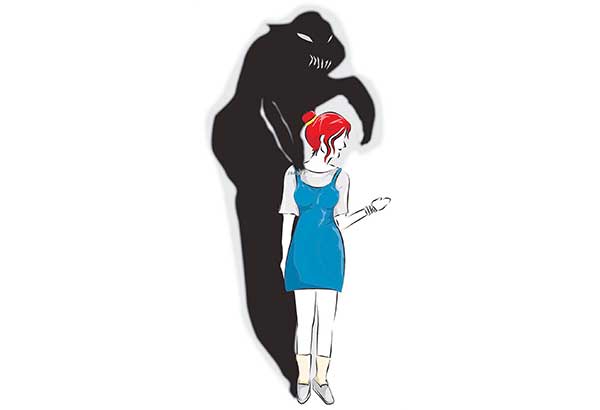Depression is a health issue


Illustration by JAYMEE L. AMORES
In our day-to-day life, we sometimes feel sad because of a certain situation. This concern, however, is usually short-lived as the issue is often resolved. However, if this feeling of unease and discontent persists and affects our over-all functioning, then this might be a depressive disorder and it will require professional help.
Based on the Diagnostic and Statistical Manual of Mental Disorders, Fifth Edition (DSM-5), you can make a diagnosis of major depressive disorder (MDD) if for the past two weeks, five or more of the following symptoms are present nearly every day:
1. Depressed mood — feeling of emptiness, sadness or hopelessness, appearance of tearfulness, irritability in children or adolescents.
2. Markedly diminished interest or pleasure in almost all activities.
3. Significant weight loss when dieting or weight gain.
4. Insomnia or hypersomnia (excessive sleepiness).
5. Psychomotor agitation or retardation.
6. Fatigue or loss of energy (anergia).
7. Feeling of worthlessness or excessive guilt.
8. Diminished ability to concentrate, think or make decisions.
9. Recurrent thoughts about death, wanting to commit suicide with or without a specific plan.
Major depressive disorder is different from grief. Grief can be caused by predominant feeling of emptiness and loss of a loved one. In MDD, there is a persistent depressed mood with the inability to feel happiness or pleasure. The feeling of sadness in grief decreases in intensity over days to weeks. The depressed mood in major depressive disorder is more persistent. In grief, self-esteem is generally preserved, unlike in MDD, where there is persistent feelings of self-worthlessness.
MDD can be mild, moderate or severe in intensity. It can be just a single episode or can be recurrent. It can be associated with psychotic features, with anxious distress, with mixed features, with melancholic features, with atypical features, with mood-congruent psychotic features, with mood-incongruent psychotic features, with catatonia, with peripartum onset or with seasonal pattern.
MDD becomes a medical emergency if there is an actual suicidal attempt as the individual may need confinement where anti-depressant therapy and supportive psychotherapy can help the individual pick up the pieces of his or her shattered self-esteem and help him or her return to previous level of occupational/academic functioning.
Associated with increased risk of completed suicide are: being male, being single, living alone and with prominent feelings of hopelessness. If the suicidal individual also has a borderline personality disorder, there is a marked risk for future suicidal attempts.
A 12-month prevalent study done in the US showed that females experience 1.5- to three-fold higher rates than males beginning in early adolescence. MDD may first appear in any age but it is said that the onset increases markedly with puberty.
Now, if the symptoms of MDD becomes chronic or persistent for the past two years, the DSM-5 states that this now is a dysthymia or a persistent depressive disorder (PDD).
If you have friends or family members with depressive symptoms, please advise them to call the office of the Philippine Psychiatric Association Inc. at 635-9858 and inquire for the name and contact number of the psychiatrist nearest his or her area. The Department of Psychiatry and Behavioral Medicine of the UP Manila-Philippine General Hospital has in-patient and out-patient services for charity cases. For more information, call the UP-PGH Department of Psychiatry at 554-8470.
(For questions on love, looks and relationships, e-mail this author at nina.halilijao@gmail.com. Belated happy birthday to my sister, Dr. Chiching Halili-Calimag of Chicago.Support the Mental Health Bill!)















